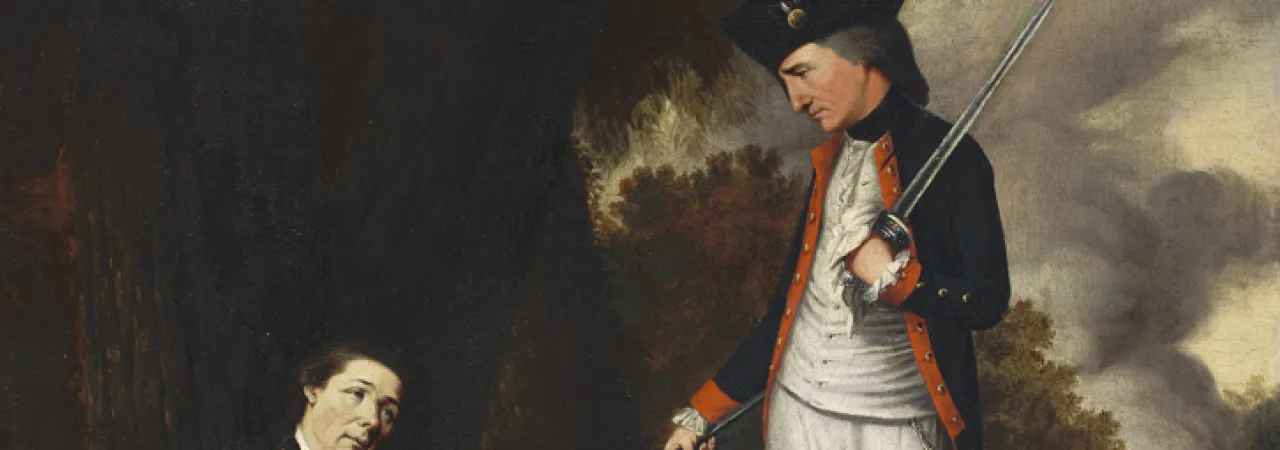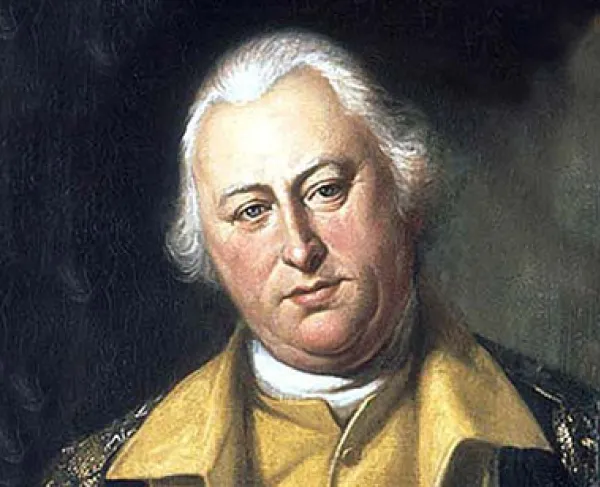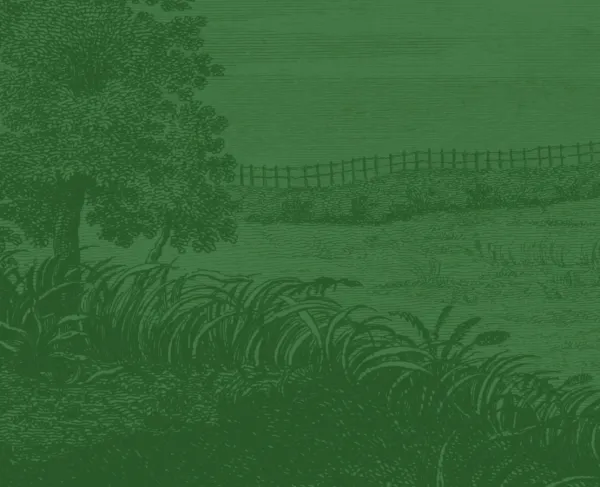
Stono Ferry
Charleston County, South Carolina | Jun 20, 1779
In December 1778, the British army successfully captured Savannah, Georgia, marking the first time they established a military presence in the Southern states since the start of the American Revolution. As the war in the Northern theater was showing signs of becoming a stalemate, British commander in chief Sir Henry Clinton pivoted to the South in the hopes of rallying Loyalist support and choking off support for the rebellion. With Savannah in their possession, the British were intent on expanding their grip on the region, which included moving into South Carolina and capturing the port city of Charleston. American commander Major General Benjamin Lincoln kept his forces on Savannah and the surrounding region, leading to a handful of skirmishes. But when the British learned that the Americans had weakened their rear guard to Charleston, Brigadier General Augustine Prevost’s army of 2,500 regulars marched out of Savannah making a long play for Charleston, pursuing American Brigadier General William Moultrie’s militiamen. Subsequently beat down by the Lowcountry weather, exhausting energy in the numerous crossings of rivers and swamps, low on supplies, and distant from home base, the British slowed. Prevost made it within seven miles of Charleston, but upon learning of mounting defenses on Charleston Neck, he opted to abandon any attempts on the city. He lingered just south of Charleston on John’s Island, deciding to evacuate by sea due to reports of General Lincoln, having learned of the threat to Charleston, moving his expeditionary force back towards the region.
Prevost began on June 16 to extract his army by boats from John’s Island back to Savannah, leaving the 71st Highlanders, his Hessian forces, and the Loyalists, altogether some 900 troops, on the mainland at Stono Ferry to cover the withdrawal, under commander Lieutenant Colonel John Maitland. The priority was moving baggage, horses, and the sick not necessary for defense across the Stono River. The front of the British defenses consisted of two square redoubts with a battery. They had three artillery pieces aiming down the road. On the right was a “marsh and deep creek, over which led a very narrow causeway that was defended by a round redoubt, and one piece of artillery, posted on the outside of the last work. A small breastwork on the bank of, and at the right angles with the river were two field pieces. The ground in front of the British was level and covered, at a small distance from their works, with a grove of large pine trees.” As the British established this garrison, Lincoln sent word to Charleston, instructing Moultrie to bring a detachment of troops and galleys from the city down to take possession of James Island and then onto John’s Island. His mission was to fool Prevost into thinking that the main attack would be in the rear, diverting from Lincoln’s intentions of attacking from the mainland.
Lincoln advanced with 1,200 men to the assault on June 20. The North Carolina militia composed his right, under Brigadier General John Butler, and Brigadier General Jethro Sumner’s regulars on the left. The flanks were covered by light troops, Lt. Colonel William Henderson at the head of one, and Colonel Frances de Malmedy at the head of the other corps. The reserve consisted of the cavalry, with a small brigade of Virginia militia. Maitland’s pickets announced the American approach at 7:00am. The 71st Regiment of Foot was posted on the right, Lt. Colonel John Hamilton‘s Royal North Carolinians composed the center, and a regiment of Hessian auxiliaries held the left. The British flanks secured as one rested upon a deep ravine and the other near a swampy morass. Both were assailable, in fact, firm enough to bear infantry and the other was not intersected by substantial water. Two companies of the 71st supported the retiring pickets and rushing into close action, fighting bravely, were mostly destroyed until eleven men were left standing. This early advance encouraged the Americans, now ordered to reserve their fire, to put the issue sharply of the battle on the bayonet.
In these opening moments, the Americans carried the attack into overwhelming the garrison. The British responded with artillery and small arms fire when the Americans got within fifty yards of the redoubts’ abatis. Disobeying orders, the patriot line returned the fire, which continued on both sides without intermission for half an hour. The action became generalized and penetrating. The British left was driven back. Seeing his danger, Maitland made a quick movement with the 71st Regiment, from the right to the left supplying its vacancy with his reserves. The Highlanders revived the contest on the left. The Hessians rallied, and were brought again into line and the action raged with increased fury. Lincoln was annoyed to find his plan of battle interrupted and exerted himself to stop the fire. A pause ensued and the American charge was renewed, but unsuccessfully executed. As the fighting raged for near an hour, Prevost’s army showed itself rapidly materializing on John’s Island to reinforce Maitland’s defenses.
“The order for retreat was not given until the causeway, which is three-fourths of a mile long, and 28 feet wide, leading from John’s Island…was completely covered from the woods down to the river, with the British reinforcements,” observed Lincoln, who now thought the assault as pointless. Mounted units and the Virginia militia covered their withdrawal. This movement produced some disorder, which being perceived by Maitland, he advanced upon Lincoln with his whole force. The calvary under the command of Brigadier General Casimir Pulaski was ordered up to charge the British whose zeal in pursuit had thrown them into loose order. Maitland closed his ranks as the horse bore upon them. Pouring full fire from his rear rank, the front held its ground with charged bayonets, subduing the Americans and affording them a retreat. Maitland had no calvary to pursue Pulaski’s Legion, so he returned to the three redoubts, succoring his men with their successful defense. The British reported losses of 26 killed, 93 wounded, and 1 missing. The American return cites 30 killed, 116 wounded, and 155 men missing, though many of these can be attributed to desertions.
From the American perspective, Moultrie failed in his diversion for want of boats. Lincoln was short on ammunition, his forces unfamiliar with the broken swamps and creeks, and Maitland’s garrison of three redoubts were too strongly entrenched and defended. Coupled with the presence of the British ship Thunder off John’s Island firing into the American lines, Lincoln’s assault was poorly executed. Future President Andrew Jackson’s brother, Hugh, died from excessive heat exhaustion during the battle. Colonel Owen Roberts, a revered officer with the South Carolina 4th Artillery, was mortally wounded; this was later depicted in a painting by Henry Benbridge. In the ensuing days, both armies harassed each other at a distance. Patriot galleys from James Island captured a British schooner loaded with plundered household furniture. On June 23, the British moved their remaining troops to the Beaufort post on Port Royal Island. Prevost might have lost Charleston but he would successfully defend Savannah against a joint American Continental and French siege in September, 1779.
The Battle of Stono Ferry sealed the fate of Prevost’s move in 1779 on Charleston – a British failure, yet the venture brought the British army valuable intelligence of the grounds and defenses surrounding Charleston. Having successfully traversed the marshy swamps and creeks south of the town, the British could now plan future operations based on this gained knowledge, something they would indeed put to use the following year during the Siege of Charleston. They also saw how disorganized the Americans were, particularly their militia. The assumption that the area’s citizens were roundly against His Majesty did not materialize from their view, giving them the belief that the majority of citizens were in fact loyalists awaiting to support the arrival of the British regulars. Our understanding of this brief skirmish helps explain why the British turned their efforts to attack Charleston in the spring of 1780. Still reeling from the humiliation of the first attempt on the town in 1776, the events at Stono Ferry and the information Prevost delivered helped make the decision for both Sir Henry Clinton and the ministers in London to take Charleston the following spring that much easier. Today, a portion of the garrison, though unrecognizable along the Stono River, has been preserved thanks to the efforts of the South Carolina Battleground Preservation Trust. A nearby plaque commemorates the battle in modern day Hollywood, South Carolina.
All battles of the Southern Theater 1775 - 1779 Campaign
Related Battles
1,200
900
147
119




